Productivity skyrockets when the right strategies are in place. Whether it’s optimizing your workspace or mastering time management, small changes can lead to big results. Understanding what drives efficiency helps individuals and teams achieve their goals faster and more effectively.
Creating an environment that fosters focus and minimizes distractions is key. Incorporating proven techniques like prioritizing tasks and taking regular breaks can transform how work gets done. By exploring the factors that boost productivity, readers can unlock their full potential and maintain a sustainable work-life balance.
Setting Clear Goals
Establishing clear goals directs focus and enhances productivity. It provides a roadmap for achievements and measures progress effectively.
Specific Goals
Specific goals define precise outcomes, eliminating ambiguity. They detail what needs to be accomplished, who is responsible, and the timeframe. For instance, increasing sales by 15% within six months targets a clear objective, assigns responsibility to the sales team, and sets a deadline. Clear goals prevent wasted efforts and ensure all team members understand their roles.
Measurable Objectives
Measurable objectives track progress and determine success. They incorporate quantifiable criteria, such as metrics or milestones, to assess performance. Examples include reducing project completion time by 20% or attaining a customer satisfaction score of 90%. Measurable objectives enable continuous monitoring, facilitate adjustments, and provide tangible evidence of productivity improvements.
Effective Time Management

Effective time management enhances productivity by organizing tasks and optimizing work schedules. Implementing structured approaches ensures efficient use of time and resources.
Time Blocking
Time blocking allocates specific time slots for tasks, minimizing distractions and increasing focus. It structures the day into dedicated periods for activities such as:
- Deep Work: 2-hour sessions for complex projects
- Meetings: Scheduled from 10:00 AM to 12:00 PM
- Breaks: 15-minute intervals every 90 minutes
This method prioritizes tasks, ensuring critical activities receive adequate attention.
Prioritization Techniques
Prioritization techniques streamline task management by identifying essential activities. Common methods include:
- Eisenhower Matrix: Categorizes tasks into urgent, non-urgent, important, and non-important
- ABC Method: Assigns priority levels A, B, and C to tasks based on their significance
- Pareto Principle: Focuses on the 20% of tasks that generate 80% of results
These techniques enable individuals to concentrate on high-impact tasks, enhancing overall productivity.
Optimizing Work Environment
Creating an optimized work environment enhances focus and efficiency. It involves minimizing distractions and establishing an ergonomic setup.
Minimizing Distractions
Reducing interruptions boosts productivity by maintaining continuous focus. Implement the following strategies:
- Noise Control: Use noise-canceling headphones or background music to limit auditory distractions.
- Digital Management: Disable non-essential notifications and use website blockers during work hours.
- Workspace Organization: Keep the desk clutter-free by arranging essential items within reach and storing others away.
- Defined Boundaries: Set clear boundaries with colleagues or family members to prevent unexpected interruptions.
Implementing these measures ensures a controlled and distraction-free environment.
Ergonomic Setup
A well-designed ergonomic setup supports physical health and enhances work efficiency. Key elements include:
- Adjustable Chair: Use a chair that supports the lower back and allows for height adjustments.
- Monitor Positioning: Place monitors at eye level and 20 inches away to reduce eye strain.
- Keyboard and Mouse Placement: Position peripherals to maintain wrists in a neutral posture.
- Proper Lighting: Ensure adequate lighting to minimize glare and prevent eye fatigue.
Optimizing these factors promotes comfort and reduces the risk of repetitive strain injuries, leading to sustained productivity.
Leveraging Productivity Tools
Utilizing the right productivity tools enhances efficiency and streamlines workflows. These tools support task management and automate routine processes.
Digital Tools
Digital tools facilitate collaboration and organization within teams. Project management platforms like Trello and Asana allow tracking of tasks and deadlines. Communication tools such as Slack and Microsoft Teams enable real-time messaging and file sharing. Calendar applications like Google Calendar and Outlook assist in scheduling meetings and setting reminders. Document management systems, including Google Drive and Dropbox, provide centralized storage for easy access and collaboration. These tools collectively improve coordination and reduce time spent on administrative tasks.
Automation Software
Automation software reduces manual effort by handling repetitive tasks. Zapier connects different apps to automate workflows, such as transferring data between platforms. IFTTT (If This Then That) creates conditional statements to trigger actions automatically. HubSpot automates marketing activities like email campaigns and lead tracking. UiPath and Blue Prism offer robotic process automation for tasks like data entry and processing. Implementing automation software can increase productivity by up to 30%, allowing teams to focus on higher-value activities.
Maintaining Work-Life Balance
Maintaining work-life balance boosts productivity by preventing burnout and enhancing job satisfaction. Implementing effective strategies fosters a harmonious integration of personal and professional responsibilities.
- Setting Boundaries Enhances productivity by maintaining clear separation between work and personal life, such as defining work hours and creating designated workspaces.
- Scheduled Breaks Maintains energy levels by incorporating regular intervals for rest and recharge, including short walks and brief stretching sessions.
- Flexible Scheduling Increases efficiency by allowing adjustments to work hours based on personal needs, like flexible start times and remote work options.
- Time Management Improves task completion by allocating dedicated time for personal activities, such as family time and hobbies.
- Support Systems Supports focus by offering resources to manage personal challenges affecting work performance, including employee assistance programs and counseling services.
- Healthy Lifestyle Boosts cognitive function by promoting balanced diet, regular exercise, and adequate sleep, such as nutritious meals and daily workouts.
- Mindfulness Practices Reduces stress by integrating techniques that enhance focus and mental clarity, like meditation and deep-breathing exercises.
Conclusion
Embracing these productivity strategies transforms how individuals and teams work achieving more with less stress Integrating goal-setting clear time management and optimized environments makes productivity a natural outcome Leveraging the right tools and maintaining a healthy work-life balance ensures sustained efficiency and well-being These practices empower anyone to reach their full potential and drive success in both personal and professional realms

